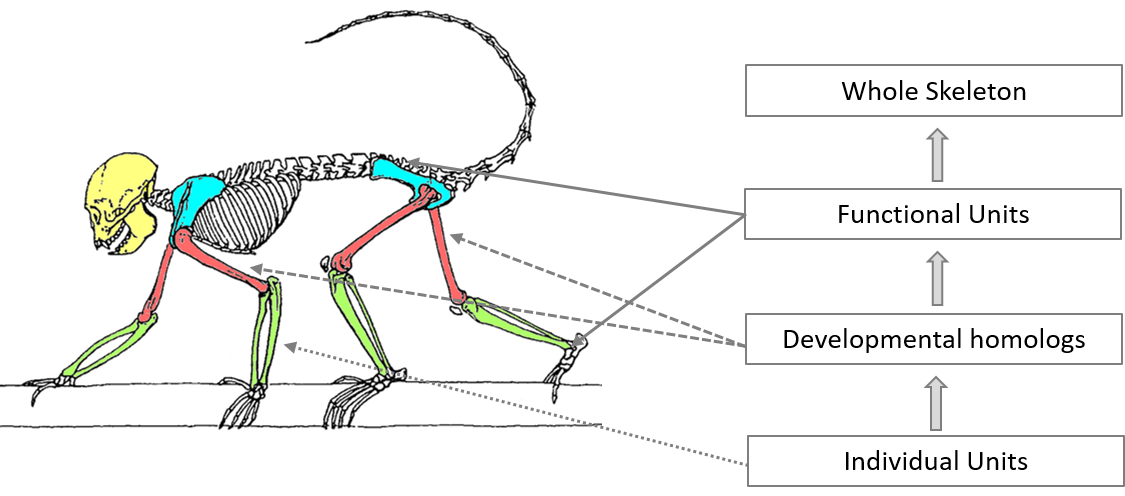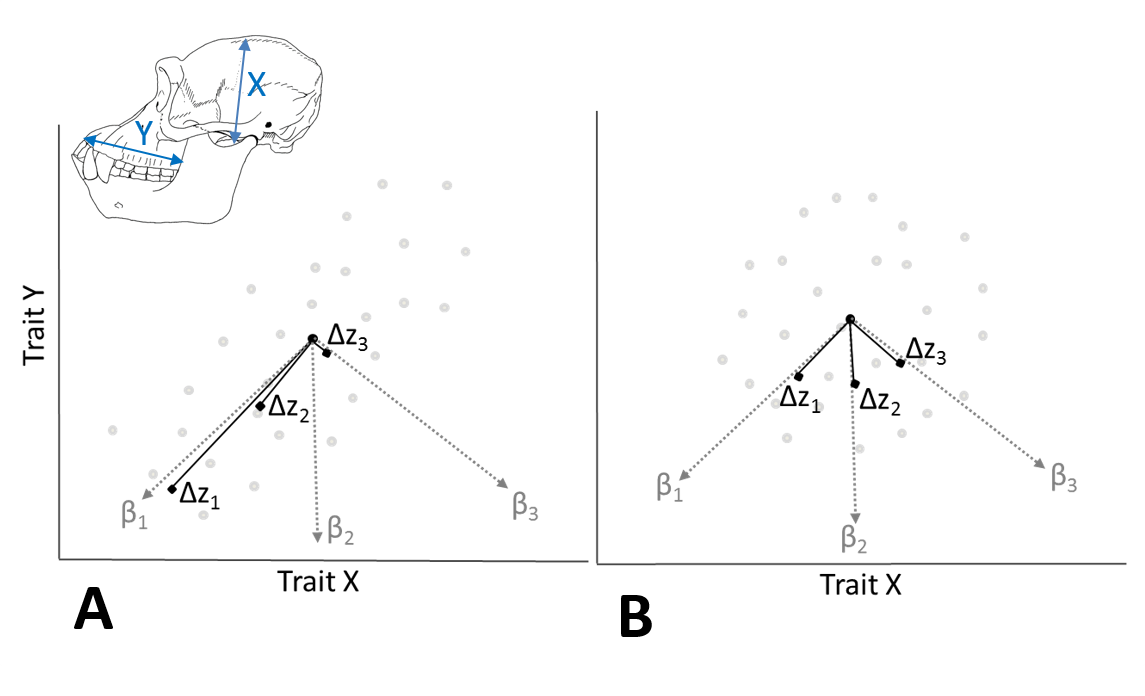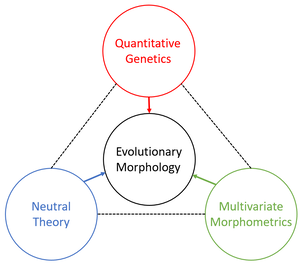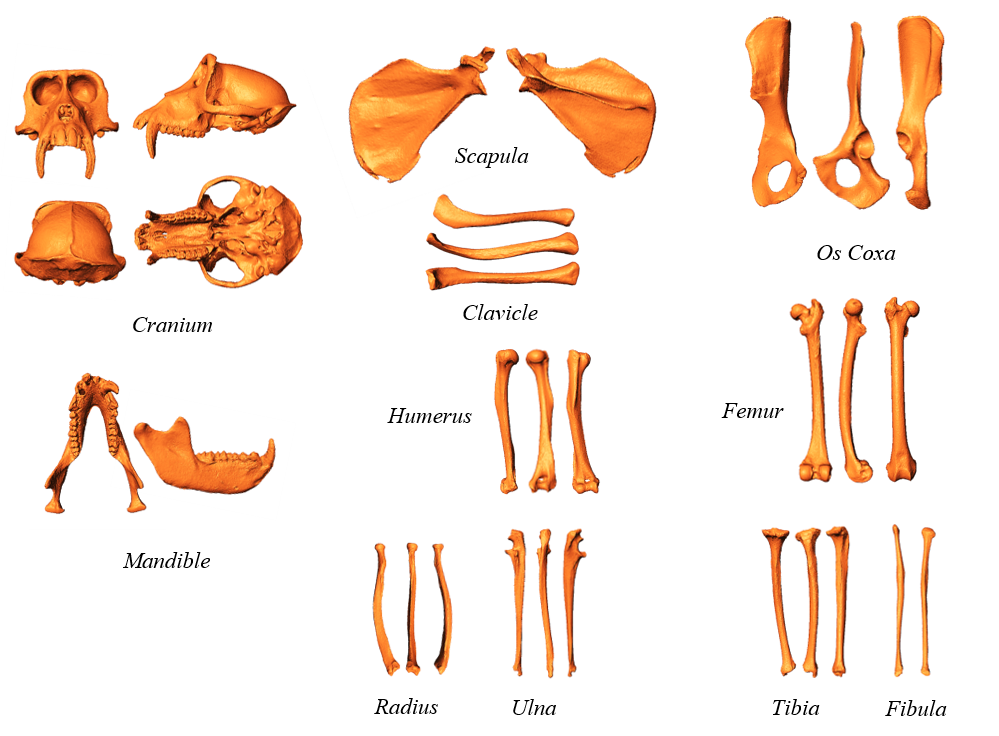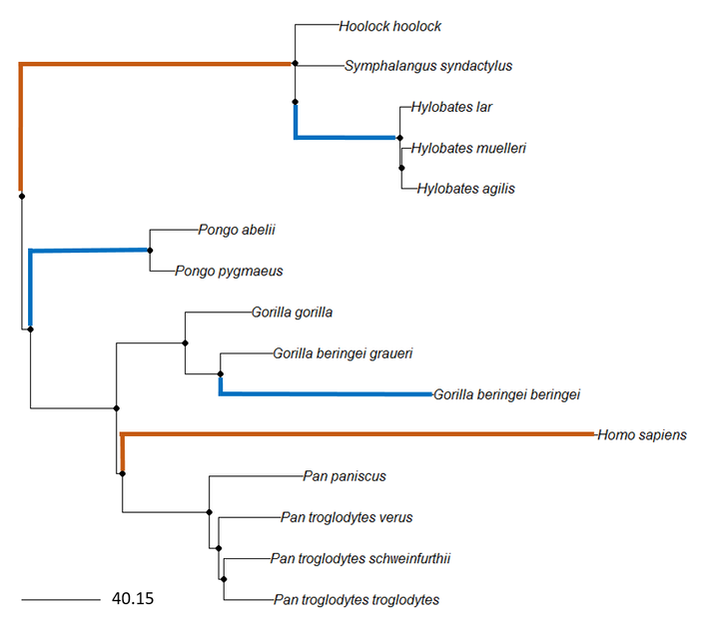Ongoing Research ProjectsIntegration of the Primate Skeleton
Previous studies of primate morphological evolution have often compartmentalized the skeleton into isolated components, preventing a comprehensive understanding of how skeletal structures interact and operate as an integrated whole. Our lab is using 3D laser scanning and geometric morphometrics to examine 11 skeletal elements (cranial and post-cranial) in 13 different species in order to gain a more thorough understanding of how skeletal components interact across Primates, and how varying levels of these interactions can influence the tempo and mode of skeletal evolution. Funding: National Science Foundation; L.S.B. Leakey Foundation. Specific investigations:
Taxonomic Indicators from Post-crania Many of the characters currently used for classifying primates into taxonomic groups are found in the skull. However, studies from our lab are demonstrating that other aspects of the skeleton (such as the pelvis and limb bones) are also useful for taxonomic classification. The ability to classify primates using skeletal elements other than the skull/dentition is important, as many postcranial fossils found in isolation are difficult to identify, and without a proper taxonomic context it is difficult to trace how skeletal features have evolved. By identifying taxonomically useful features on post-cranial skeletal elements, these studies will help us better understand how living primates are related to each other, and how their morphology has changed over time. Funding: National Science Foundation. Specific investigations:
Reconstructing Evolutionary Processes Our lab uses quantitative genetics and ancestral state reconstruction in conjunction with geometric morphometrics to determine if skeletal traits are the product of natural selection or of neutral evolutionary processes (genetic drift). These studies identify which traits were under selection, what the morphological consequences of this selection were, and how this selection may have influenced the evolution of other non-selected but integrated structures. This provides a means for evaluating various adaptive scenarios that have been proposed to explain observed morphological differences among species. Specific investigations:
Human Population History Our lab investigates human population history and migration patterns, and how these influence the evolution of skeletal variation, particularly in the cranium. Specifically, we have examined morphological changes associated with agricultural transitions, the peopling of the Americas, and migration and affinity patterns in Ottoman Romania and Hungary. Specific investigations:
Population history in the European Ottoman era
Fluctuating asymmetry Most animals are bilaterally symmetric, meaning that most organs develop from the same genes in the same environment. Because of this, investigations into deviations from symmetry can provide important information about instability over the course of development. Our lab has investigated fluctuating asymmetry in several skeletal elements in both human and non-human primates. Funding: Wenner-Gren Foundation Specific investigations:
|
|
